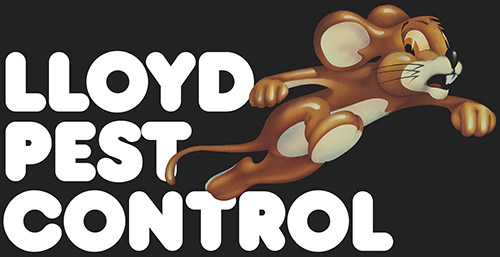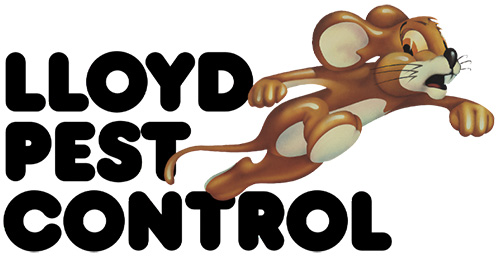How Did I Get Fleas In My House?
Evolution created a blood-sucking expert in the flea. The roughly 2,500 flea species that make up the insect order Siphonaptera take their name from Greek words “siphon” (tube) and “aptera” (wingless) to form the phrase “wingless tube.” Fleas are tiny parasitic insects with flat bodies designed to live on the fur, feathers, or hair of its hosts. Fleas’ strong claws are perfect for holding on, and their incredibly strong back legs help launch the pests onto their hosts to suck blood with their specialized mouth parts like a nasty straw.
Fleas are found all over the world. In fact, fossil records have been found dating their ancestors back to the Jurassic period. It’s safe to say all humans are at risk of dealing with fleas. But how do you identify fleas? What do you need to know about how they spread and what dangers they present? And most importantly, how do you get rid of fleas?
What Do Fleas Look Like?
Fleas and bedbugs are often confused for each other. Makes sense: both are tiny, flat insects that suck blood, and both are a reddish-brown color. But pay attention and you’ll see some differences. An adult flea is smaller than a bedbug, at approximately 2.5 millimeters (only a bit bigger than the head of a pin) long versus the bedbug’s 5-7 millimeters body length.
You can also tell the difference by where the bugs are found. A bedbug most likely resides in the piping of your mattress and only comes out at night. A flea is most likely to be found outdoors in tall grass, on your pet, your pet’s bedding, or carpeting inside your home. Bites from a flea resemble a cluster of mosquito bites and begin to itch within an hour. Bed bug bites look like large, flat welts and can take several days to show up.
How Did I Get Fleas?
The most common way for fleas to get inside your home is on your pet. Fleas live outside, often clustered together in the tall grass. They are attracted to the body heat, carbon dioxide, and vibrations that mammals emit as they move around.
“Your backyard can seem totally empty and fine, and then in one area suddenly they’re hopping all over, jumping on you or your pets,” says Efrain Velasco, Lloyd Pest Control’s Technical Director and a trained entomologist. “They want to be on an animal.”
Once a flea has hitched a ride on a pet, they use their specialized, straw-like mouths to drink its blood (which they later defecate as small, dark pellets). They also often lay eggs on their host. Those eggs are loosely attached and it’s just a matter of time until they drop off your dog or cat brings them indoors. Once inside, they fall off and hatch in dog or cat beds, furniture, and carpets, where they lie in wait for their next victim: you. Most of the time, fleas don’t live on humans—we’re not sufficiently furry enough for that—but they will happily take a blood meal from you.
Can I Get Fleas If I Don’t Have Pets?
Yes. Though fleas often ride into a home aboard Fido, you can get fleas even if you don’t have pets. Fleas often enter yards and homes via wildlife. Last year, one of our veteran pest control technicians visited a home multiple times: the woman kept getting fleas. She had no pets, and the technician only discovered why her flea problem was happening after looking under the home’s foundation. They found a family of flea-ridden raccoons sleeping the day away. Removing the raccoons took care of the flea problem.
How Dangerous Are Fleas?
They’re certainly not fun. Besides the “ick” factor, their bites can spread nasty diseases like murine typhus and parasites, such as tapeworms. That’s why it’s important to catch flea infestations early, take care of them, and make sure they’re gone for good.
How Do I Get Rid of Fleas?
Administer flea medication to your pets. Veterinarian-approved flea collars, oral medications, and topical treatments all work well to halt the growth and reproduction cycle of fleas that hitch a ride on your pet—helping to take care of the problem at its source, before fleas can gain a foothold in your home. You should also eliminate yard debris and waste where fleas live. This includes leaf litter, rock piles, wood piles, overgrown hedges, and long grass.
Additionally, keep wild animals away from your home. Don’t feed feral cats or other animals that might be carrying fleas, and make sure your garbage cans are securely covered to keep foraging raccoons at bay.
How Do Pest Control Professionals Kill Fleas?
Unfortunately, flea eggs that hatch into larvae enter a pesticide-resistant cocoon where they can lie in wait as a pupa for months. This makes them a tough pest to get rid of. If fleas become a problem in your home, your best bet is to seek help from flea professionals in Southern California.
When they find fleas, Lloyd Pest Control’s veteran technicians make sure you’re taking care of your dog’s flea problem, while we treat the exterior of your home with a low-intensity pest barrier. We’ll treat for eggs, pupal stage fleas, and adult fleas indoors in all the places they hang out: carpet, furniture, and common pet areas. For immediate assistance with fleas, give us a call, or request a quote for our flea control services today!






